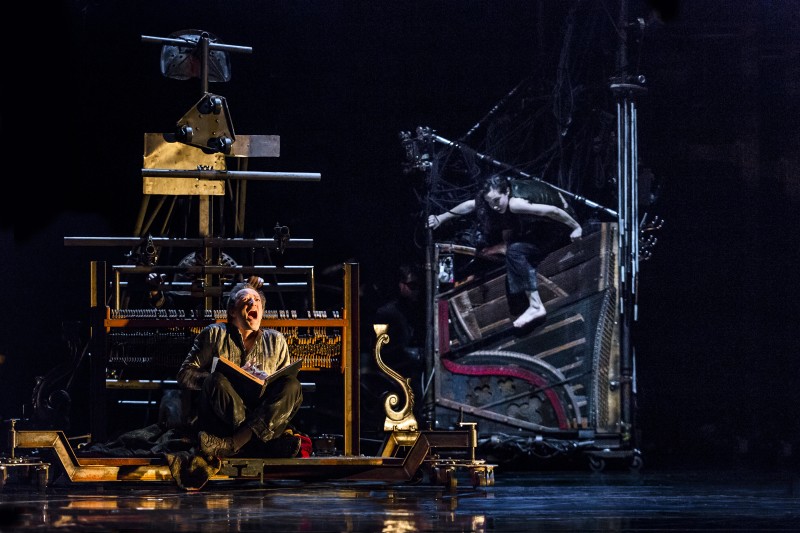 What is most striking about James Thiérrée’s fifth production for Compagnie du Hanneton is not the sheer scale of the ever-transforming, decaying set, nor the exquisitely-controlled and detailed physical scores of the performers, but the fleeting and shifting surrealist world that Thiérrée has crafted in this 90-minute spectacle.
What is most striking about James Thiérrée’s fifth production for Compagnie du Hanneton is not the sheer scale of the ever-transforming, decaying set, nor the exquisitely-controlled and detailed physical scores of the performers, but the fleeting and shifting surrealist world that Thiérrée has crafted in this 90-minute spectacle.
Almost steampunk in feel, this is a world in which iron girders, mirrored panels, antique sewing machines and giant organs roll freely across the stage on numerous thick castors. Amongst this the human figures struggle to orientate themselves, take control of each other, and abandon themselves to ecstasy.
Thiérrée’s world is rarely static, so a deft female chorus swims across the stage on steel chairs, Thiérrée languidly reclines in a decaying armchair stumbling blindly towards some imagined vision, and a scampering contortionist hangs gargoyle-like from a dense wall of scaffold pipes. This continual momentum is occasionally punctuated by frozen tableaux or sudden blackouts.
Contributing to the hallucinatory experience, both light and sound take on a life of their own. Individual objects suddenly illuminate amongst the darkness, or the scratched writing of a pencil expands into a deafening score accompanying the decay of Thiérrée’s character’s mind.
In interview Thiérrée is evasive as to the themes of the work, and just as the physical world transforms time and time again, breaking down and reconstructing itself, so too do the possible themes. In one moment Thiérrée may be the curmudgeonly king of this world, ruling with nonchalant disdain, only to crash in into Lear-esque madness; or he might sit self-absorbed, puffing intently on an ostentatious pipe; whilst at others the ensemble of six dancers take central focus crafting a hallucinatory struggle with the crudely industrialised environment. This disorientating journey constructs a delicate and sometimes unwieldy behemoth of an experience.
In Tabac Rouge, the animation and intrinsic life of the objects in the space trace echoes of the great Polish artist Tadeusz Kantor; echoes that are further developed in the apparent autocracy with which Thiérrée’s character shapes the action within the world. But Thiérrée’s control is illusionary, and at the heart of the work is the power that this world has. Although at the climax of the work Thiérrée appears to have the world at his fingertip, literally, around him the rest of the cast are swallowed whole – leaving him alone, like a defiant Canute facing a sea of visions.
